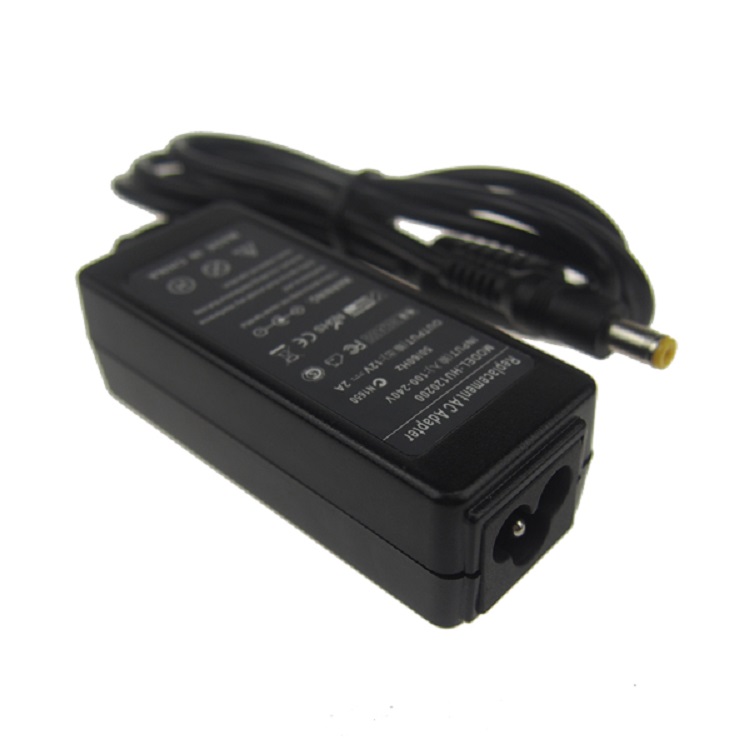In recent years, with the improvement of substation automation level, computer monitoring systems, microcomputer protection devices, microcomputer fault recording devices and various data management machines have been widely used in the substation, and the cooperation of these automatic devices is required. There is a precise and uniform time. When the power system fails, it can realize the operation monitoring and post-accident failure analysis of the whole station under the unified time reference, and also analyze the cause of the accident by the sequence of protection actions, switching sequence and accurate time. process. With the increasing complexity of the power grid, the increase in installed capacity and the expansion of the power grid, the provision of standard time clock references has become an urgent need for power plants, substations and even the entire power system. The unification of clocks is an important factor in ensuring the safe operation of power systems and improving operational levels. The measures are one of the most basic requirements of the substation automation system.
This article refers to the address: http://
one. The superiority of the GPS clock system
Substation uses computer monitoring system, automation and line microcomputer protection device, fault recording device, electric energy billing system, SCADA system, etc. The substation time synchronization forms mainly include the following:
(1) Each equipment provider adopts its own independent clock, and each clock has a certain deviation in timing accuracy due to the difference in product quality, so that the entire system cannot perform data analysis on the basis of unified time reference. Compared with the comparison, the correct fault analysis and judgment after the event brings great hidden dangers.
(2) When the master station realizes the timing by means of the master station, the dispatching center master station sends a timing command to synchronize the clocks of the respective power stations in the system through the communication channel. This method requires a dedicated communication channel, since the slave station reaches each substation. The distance is different and the communication delay is different, so only the system clock can be guaranteed to be at the level of 100 milliseconds.
(3) A small GPS receiver is used to provide multiple RS232 ports, which are connected to each computer one by one with a serial Cable to achieve time synchronization. But in fact, this synchronization method also has shortcomings, and the cable length used cannot be too long; the response speed of the server and the delay of the client directly affect the timing accuracy. Moreover, each station often has different devices that need to receive clock synchronization signals, and the interfaces are different, such as RS-232/422/485 serial port, pulse, IRIG-B code, DCF77 format interface, etc.; the number of devices is not equal, resulting in Some types of interfaces of GPS devices are not enough or lack some type of interface, and one or even several GPS receivers need to be added, which is often limited by insufficient funds or installation location.
(4) Timekeeping with the GPS clock system. GPS (Global Positioning System), a global satellite navigation and positioning system established by the US military. A dedicated receiver receives signals transmitted by satellites to obtain position, time and other relevant information. The GPS system transmits the signal once every second with a time precision of less than 1μs. The signal can be reliably received at any time and anywhere in the world. The satellite continuously transmits its ephemeris parameters and time information. The time information transmitted by the GPS contains Year, month, day, hour, minute, second, and IPPS (standard seconds) signals, thus having high frequency accuracy (up to 10-12 levels) and time accuracy. The use of GPS satellite synchronous clock system in the comprehensive substation has obvious advantages, which can realize the operation monitoring and fault analysis of all stations in the unified GPS time base. Various automation equipments of substations (such as fault recorders, microcomputer protection devices, monitoring systems, etc.), based on the accurate clock synchronization signals provided by GPS, unify the time base of the substation and dispatch center, and improve the SOE after the power system fails. The time accuracy greatly improves the safety and stability of the power system, and provides strong evidence for analyzing the fault situation and the sequence of circuit breaker actions, and has created good technical conditions for the grid safety and stability monitoring and control system.
The GPS clock system solves the problem of the unified time base of the substation well, and realizes the accurate timing between the station and even the station. At present, it has become the best timing solution and an inevitable trend of technology development. According to the requirements of "Guangdong Power Grid 110-220kV Substation Automation System Technical Specification", we have used the time synchronization system to perform the calibration of the substation equipment in the new station or the comprehensive self-reconstruction station in recent years. In September 2005, Guangdong Power Grid Corporation issued the Technical Specification for GPS Time Synchronization System of Guangdong Power Grid Substation, and the management, design, installation, testing and operation of the GPS time synchronization system of the new station or transformation station were in accordance with the technical specifications. Implementation.
two. Introduction and working principle of GPS clock system
The GPS clock system uses the RS232 interface to receive the signals transmitted by the GPS satellites, and then converts them into the interface label (RS232/RS422/RS485, etc.) and time code output (IRIG_B) that meets various requirements through the protocol conversion of the central processing unit of the main CPU. Code, ASCII code, etc.). The GPS clock system generally consists of a GPS satellite signal receiving part, a CPU part, an output or extension part, a Power Supply part, and a human-machine interaction module part.
The GPS clock system mainly has three timing modes: synchronous pulse output, serial time information output and IRIG-B code output. The pulse synchronous output mode, that is, the synchronous clock outputs an accurate sync pulse at regular intervals. When the time-sending device performs the pairing after receiving the synchronization pulse, the time-lapse error of the internal clock of the device is eliminated. The disadvantage of pulse synchronization is that the time information cannot be directly provided, and the time-sending device will go wrong if the time source is wrong. The serial synchronous output mode outputs the time information as a serial data stream. The serial time information received by each timed device is once synchronized, and the device clock has its own travel time error during the time interval when the broadcast is not received. The serial mode is used to compare the pulse time. The method is complicated. In addition, during the receiving process, the time spent on information processing also affects the accuracy of time. Therefore, it is mainly used to time stamp the event. If you want to improve the accuracy of the time, you need to give the second time in the field application. Pulse signal. The rising edge of the 1PPS (second pulse) signal is used to synchronize the external clock with the GPS clock and to suppress the synchronization error within the range of system accuracy requirements.
IRIG-B code output mode, time code standard issued by IRIG organization for time synchronization of each system, the most widely used is IRIG-B version, referred to as B code. The B code is output in BCD code mode, output once every second, and contains 100 pulses. The output time information is: seconds, minutes, hours, and date order. The B code signal generally has four forms: (TTL) level mode, RS422 level mode, RS232 level mode, and modulation signal (AM). There are advantages and disadvantages between pulse timing and serial port timing. The former has high precision but cannot provide time information directly; while the latter has relatively low precision, especially in multi-cell mode or monitoring system with multiple management machines and multiple subsystems. The time accuracy is especially affected by the serial communication delay. The B code pairs take into account the advantages of both. It is a time-aligned method with high precision and standard time information. When the intelligent equipment of the substation adopts the B code pair, the communication message of the field bus is no longer needed. In time, it is no longer necessary for the GPS to output a large number of pulse contact signals. According to the technical specifications, the IRIG-B code (DC) clock synchronization signal should be used in principle for the newly-designated time-station equipment of the substation automation system.
three. Access and Application of GPS Clock System in Comprehensive Self-Substation
The current GPS clock system supports hard time (pulse nodes PPS, PPM, PPH), soft time (serial message), code timing (IRIG-B, DCF77) and network NTP, to meet different equipment at home and abroad. For the time interface requirements, the microcomputer protection device, the measurement and control device, the fault recorder, the automation system station control layer device, etc. in the substation can all be connected to the GPS clock synchronization system. GPS timing interface generally has: RS232 serial output, RS485 serial output, non-modulated IRIG-B output signal, sub-pulse 1PPM output signal, second pulse 1PPS output signal. In the substation, there are often many different old and new devices that need to receive the clock synchronization signal. There are many types of interfaces. In actual engineering applications, several pairs of time-to-time methods are often used together, so it is necessary to add hard contacts or networks. Time to unify time. For example, when there are many devices in the substation automation system that do not support the B code pair, the serial port timing and the 1 PPM pulse pairing time are combined. The serial port timing is accurate to the millisecond level of the smart device. And 1PPM sends a pulse every minute to the clock clear line of the smart device, thus achieving accurate synchronization of the clock. In principle, the intelligent device with the B code time function can no longer accept the serial communication message timing, otherwise there will be time hopping, and the more advanced intelligent device will add a criterion in the communication program, when B When the code pair function fails, the serial port timing message is accepted.
The clock synchronization system of the substation consists of a master clock, a time signal transmission channel, and a time signal user equipment interface (extension device). The main clock is generally located in the control center of the substation, including standard chassis, receiving module, receiving antenna, power module, time signal output module, etc., and realizes GPS timing for substation equipment and interval layer IED equipment (including smart energy meter, etc.) as required. And with clock synchronization network transmission correction measures.
Combined with the actual operating experience and actual conditions, take the comprehensive self-reconstruction of the 110kV Zhongxing station as an example. A GPS time synchronization system screen is installed in each of the substation protection room and the high voltage room, and a standard synchronous clock body is configured. The main clock completes the reception and processing of the GPS satellite signals, and provides a standard synchronization time signal to the signal expansion device (RS422 level mode). IRIG-B); and each master clock has internal punctuality. Each standard synchronous clock body should be able to receive two IRIG-B (DC) time code time information functions. When the internal clock of the main clock receives the external time reference signal, it is synchronized by the external time reference signal. When the external time reference signal is not recovered, it maintains a certain travel accuracy until the external time reference signal is restored to automatically switch to normal. Working status. The comprehensively modified Zhongxing substation is networked by Ethernet. There are some manufacturers' old devices that only have RS232 serial port or RS485 interface. The newly installed main transformer line measurement and control device, #1 main transformer protection, #2 main transformer protection and all line protection of 10kV high voltage room have B code interface. When 422B code pair is used, RVVP two core shielding is selected. The communication cable, 1 is +, 2 is -, and each device is sequentially connected to the B code output label segment of the GPS synchronous clock device. The 110kV fault recorder has no B code interface, and the empty contact accesses the split pulse and the second pulse to achieve hard contact timing. When the RS232 serial ports of the two telecontrol mainframes are respectively connected to the GPS time synchronization system, the #3 main transformer protection and the 110kV line protection device are old models, and the B code pair cannot be realized, and the local monitoring background can only pass the remote host. Realize the comprehensive network time.
At the 500kV Boluo station, as shown in Figure 1, a set of master clocks is set in each of the 500kV relay protection chamber and the 220kV relay protection chamber, which is responsible for the timing of the secondary equipment of the small room, including soft timing and hard time (1PPS, 1PPM, differential signal), encoding timing (IRIG-B, DCF77). The time signal receiving unit for protecting the main clock of the small room receives the GPS time signal of the small room, and receives the GPS time signal of the other small room as an alternate standard time source input (input by IRIG-B time code through the optical fiber), two The master clocks can be used alternately between each other. When a time signal receiving unit of a small room has a problem (for example, tracking satellites, antenna damage, etc.), it automatically switches to another small room GPS to obtain a standard time signal to ensure the standard. The cell timing signal is output normally. In addition, a set of extended clocks is arranged in the main control room, and the main clock and the time expansion device are connected by optical fibers, and the time signal receiving unit respectively acquires time signals from the two main clocks, mutually standby, and automatically switches to complete the equipment of the room. In time, the extension device accepts the time information provided by the master clock and expands to provide multiple output interfaces to other devices.
In order to ensure the function, accuracy and efficiency of the GPS clock system, daily maintenance and maintenance work should be done. The components of the GPS timing system should be checked regularly. First, check whether the antenna signal on the display panel of the device is normal, and then check the display. The number of satellites locked on the panel (generally should be greater than 3). After the above two are normal, compare the time displayed on the display panel with the time displayed or printed on each device to confirm all the systems in the system. The timing unit of the equipment participating in the time is working normally, and the various components in the system are regularly inspected to ensure the reliability of the entire system.
A monitoring device should also be installed in the GPS screen, and the alarm contact output of the running state, including the power disappearing alarm, the IRIG-B signal disappearing alarm, and the device self-checking abnormal alarm, in time to reflect the GPS running condition. During normal operation, the power indicator should be normal. The “1PPS†pulse indicator flashes once per second. When the “IRIG-B signal disappears alarm†is issued, the unit does not correctly receive the IRIG-B input signal, and should be further checked.
four. Conclusion
The GPS clock system is widely used in the comprehensive self-reconstruction station and the new station. It not only can effectively reduce the workload of maintenance and operation personnel, but also enables a unified and standard time reference for most of the operating equipment in our substation. The analysis and traceability of various events occurring in the operation has improved the automation level of the power system and provided strong technical support for the Office to move to a higher management level.
12V Adapter also called 12V AC DC adapter, the input of 12V power adapter is 100v-240v 50/60HZ suit for worldwide use.
Yidashun can produce 12v power supply from 12V 1A~12V 16A MAX. This power adapter mostly make as dc size 5.5*2.1mm, 5.5*2.5mm, round 4 pin used for led lights, CCTV camera, LCD TV, set-top box and so on. All our adapter with full power and can be used for different devices run constantly each day.
All our 12v AC Adapter with over current protection, over load protection, short circuit protection, over heat protection.when use it can safeguard your equipment.
Usually our dc cable and ac cable compatible with the 12v power adapter is 1.2m, we can also customized the length as your requests according to your devices.
if the adapter you need is not 12V, pls contact us freely, we can also customized the adapter output can your demands. OEM&ODM orders are highly welcomed!



12V Adapter,12V DC Adapter,12V Power Adapter,12V DC Power Adapter
Shenzhen Yidashun Technology Co., Ltd. , http://www.ydsadapter.com